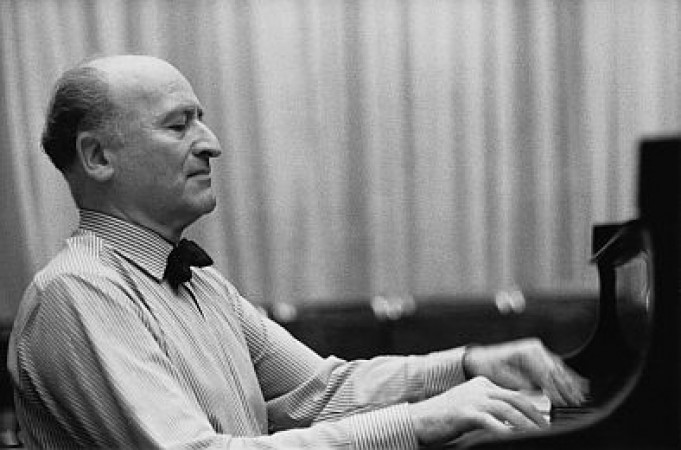
19 July 1905, Karwin – 23 September 1987, London
"The all-round pianist" – Aladár Tóth called him on the occasion of a 1935 concert. The opinion of the famous music critic was shared by all those contemporaries who heard Louis Kentner play the piano – either as a child prodigy or as a mature artist. Kentner was born on 19 July 1905 in Karwin, in Silesia. In the autumn of 1912, at the age of six, he came to Budapest to enter the piano department of the Music Academy. His first teacher there was Kálmán Chován. From 1914 to 1921, when he received his artist's diploma, he studied with Arnold Székely. He had his Budapest debut as a pianist at the age of fifteen, and not much later performed in the great cities of Europe and America. He became interested in composing while still a student and, at the encouragement of Zoltán Kodály, between 1916 and 1923 completed the course in composing as well, studying at various times with Kodály, Viktor Herzfeld, Leo Weiner and János Koessler.
Even decades later, Kentner recalled with warmth his one-time teachers at the Academy, among whom the personalities of Kodály and Weiner had made a particularly strong impression on him. Whereas Kentner attended Leo Weiner's classes in composition for only a year, he, just like the other instrumentalists, participated in Weiner's chamber music classes for years, and even after graduation belonged to his onetime teacher's circle of friends. He respected Weiner's intellect and – as he characterised it – "his angelic personality", as well as the "natural dexterity" of his piano playing. Kentner kept some of Weiner's compositions, "neither ‘advanced', nor old-fashioned", simply good, "crafted by a master," in his concert repertoire for years.
Thanks to his outstanding talent, Kentner was able to make friends with the rather reserved Kodály as well, who praised him in a 1923 review as a "poet and exceptionally fine pianist". At his concerts Kentner regularly played Kodály's piano works; he gave the premiers of the Meditáció (Meditation) and of the Marosszéki táncok (Dances of Marosszék). In his recollections of Kodály, Kentner tells the exciting story of the birth of the Dances of Marosszék: "I knew already some of the folk melodies; Kodály once showed these to me as the raw material for the work in progress. But the work itself was not ready even on the day before the concert. (…) On the day of the concert, Kodály received me, holding a page of manuscript paper on which the ink had not dried yet. He told me: ‘Learn this.' With that he led me into the dining room, sat me down on a couch and disappeared into the room next door to continue his work. While Kodály alternately played the piano and wrote down the score, I learned the first two pages by heart. Soon Kodály appeared with another sheet, saying, ‘Now learn this.' This went on like this till noon; by that time Kodály was ready with his work and I was ready with mine. I went home and spent the afternoon practising and in the evening played, with great success, the first performance of the Dances of Marosszék."
Presumably experiences like this motivated Kodály to call Dohnányi's attention to Kentner in the 1920's and Bartók's a decade later. At any rate, Kentner attributed it to Kodály's advice that in 1933 Bartók entrusted him with playing the piano for the Hungarian premier of the Second Piano Concerto. It was from this time onwards that he included in his repertoire Bartók's other piano works as well, among them the Three etudes, which he played in 1934, according to Aladár Tóth, "with marvellous virtuosity". In 1935 Kentner settled in London, where in 1946 he performed, for the first time in Europe, Bartók's Third Piano Concerto.
In London it was his interpretation of the Viennese classics and Bach that drew attention to him. At his concert series he performed all the piano sonatas of Beethoven and Schubert, and all the preludes and fugues of the Wohltemperiertes Klavier. He frequesntly appeared in chamber music concerts, partnering, among others, Yehudi Menuhin. Besides the classics, he also performed the works of many contemporary British composers, among them Rawsthorne, Tippett and Walton. However, Chopin and Liszt occupied the centre of his interests all his life. It was in no small part due to his Liszt interpretations that interest increased in the Hungarian composer in London. For decades he was chairman of the British Liszt Society, and wrote about Liszt's piano works in Alan Walker's 1970 volume depicting the composer's life and works. Louis Kentner's long and productive life ended on 23 September 1987 in London.
A. K.


